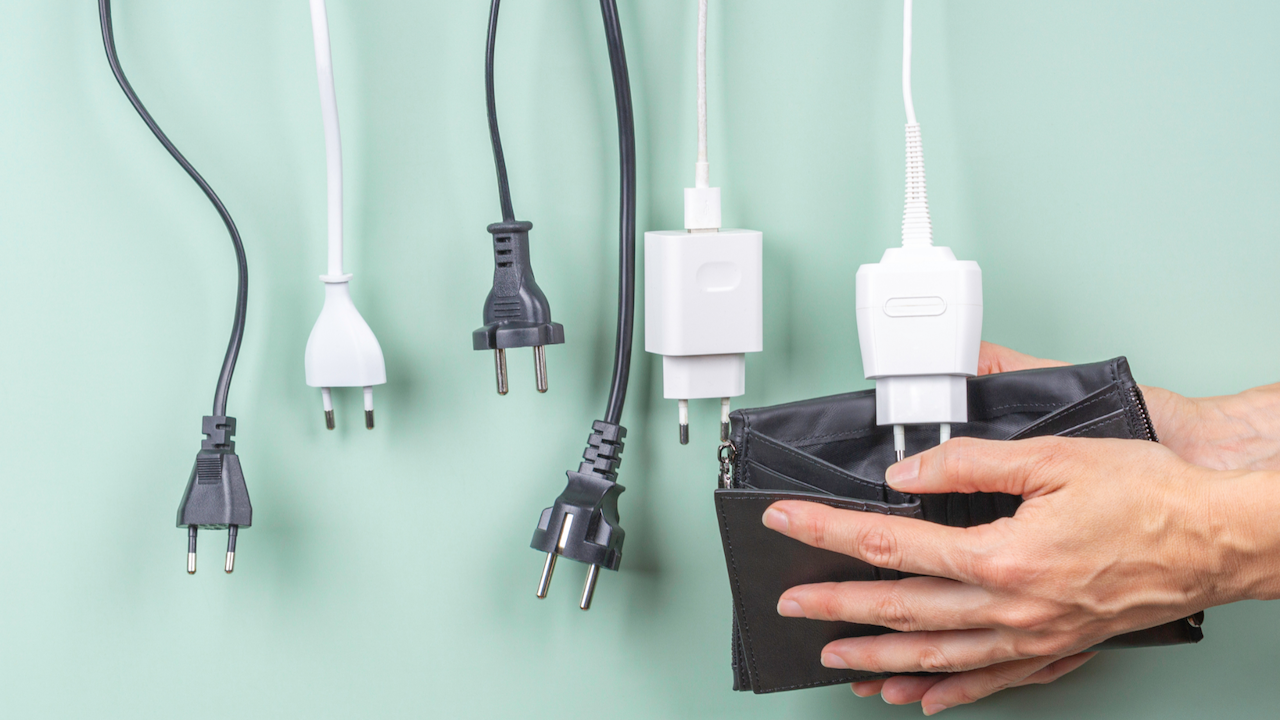Image source: Canva.com
Modern TVs generally consume between 50 and 300 watts on average. Power usage varies based on the type, size, and usage frequency of the TV. Here’s a quick overview of power consumption by TV type:
- CRT TVs: Traditional Cathode Ray Tube (CRT) TVs, still used for gaming due to their reduced input lag, consume between 60 and 150 watts per hour.
- Plasma TVs: Plasma TVs, known for their excellent color accuracy, are among the least energy-efficient, using up to 300 watts per hour.
- LCD TVs: Liquid Crystal Display (LCD) TVs, which produce images by passing light through liquid crystals, generally use between 50 and 150 watts per hour, depending on screen size.
- LED TVs: LED TVs, a type of LCD TV with Light Emitting Diodes for backlighting, are more energy-efficient, consuming between 50 and 100 watts per hour.
- OLED TVs: Organic Light Emitting Diode (OLED) TVs, which use a carbon-based film to emit light and do not require a backlight, are highly energy-efficient, with power usage ranging from 30 to 200 watts per hour.
Daily Power Consumption of a TV

The daily electricity consumption of a TV depends on the amount of time it is used.
For example, if you have a 100-watt TV and watch it for 4 hours each day, the daily usage would be:
100 watts × 4 hours = 400 watts per day
Monthly Power Consumption of a TV

TV electricity usage varies throughout the week, with typically lower consumption on weekdays when fewer people are home and higher consumption on weekends. To estimate monthly usage, calculate based on a four-week cycle and adjust for additional days.
Here’s an example using a 100-watt TV:
- Weekdays (Monday to Friday): 5 days × 100 watts × 4 hours = 2,000 watts
- Weekends (Saturday and Sunday): 2 days × 100 watts × 6 hours = 1,200 watts
- Weekly total: 2,000 watts + 1,200 watts = 3,200 watts
- 4-week total: 3,200 watts × 4 = 12,800 watts
- Rounding for extra days: 2 days × 100 watts × 4 hours + 1 day × 100 watts × 6 hours = 1,400 watts
Electricity Consumption of a Smart TV
Smart TVs generally consume more electricity than traditional TVs due to their advanced features, including internet connectivity and streaming capabilities. Despite this, the difference in power consumption is not substantial, as smart TVs often replace the need for a separate set-top box.

Understanding the Power Consumption of Your Household
Factors Affecting TV Electricity Usage
Understanding the factors that influence TV power consumption can help reduce energy costs. Here’s an overview of the key considerations:
Size
- Backlighting: Larger screens need more powerful backlights to maintain uniform brightness.
- Processing power: Bigger screens require more energy to handle higher resolutions and complex processing tasks.
- Resolution and pixel count: Larger displays have more components and cooling systems, which increase energy usage.
Age
- Older TV models, such as CRTs and early LCDs, typically consume more power than modern LED and OLED TVs due to advancements in technology that improve energy efficiency.
Brand and Model
- Different manufacturers use various technologies and energy-saving features, resulting in variations in power consumption. For example, Samsung’s QLED TVs use Quantum Dot technology for efficient color accuracy, while Sony offers highly energy-efficient models.
TV Usage
- Although TVs are not the largest power consumers compared to appliances like dishwashers or air conditioners, extended usage can significantly impact electricity bills. Calculate daily and monthly usage to understand its effect on your overall energy costs.
How to Choose an Energy-Efficient TV
Choosing an energy-efficient TV can help reduce your monthly electricity bill. Here are the key features to consider:
- Size: Generally, smaller TVs have lower power ratings and consume less energy.
- ENERGY STAR Certification: Look for TVs with the ENERGY STAR label, as these models meet efficiency guidelines set by the EPA and are typically 25% more efficient than non-certified models.
- Energy-Saving Mode: Features such as automatic screen dimming and power-off functions, which put the TV into standby mode when not in use, help conserve energy.
- LED Backlighting: LED TVs are usually more energy-efficient than LCD and plasma models.
- Smart Features: Energy-saving options on smart TVs may include light sensors that adjust brightness based on ambient light and the ability to disable power-hungry features like quick start.
How to Calculate Your TV’s Energy Usage

If you want to know how much electricity your TV uses, check the yellow Energy Saver sticker. The estimated yearly electricity use in kWh is likely the most accurate number. Multiply this number by the average electricity rate in your area to estimate your annual cost to power your TV. For an estimated monthly cost, divide the yearly cost by 12.
FAQs About Powering a TV
When is the best time to run a TV?
If you have a time-of-use (TOU) rate plan, electricity costs vary throughout the day. Generally, it’s cheaper to use appliances during “off-peak” hours, which are usually overnight.
How many solar panels are needed to run a TV?
Average TVs use between 50 and 200 W of electricity. Since most solar panels are rated at around 350 W, you can easily power a TV with just one solar panel.
What are ENERGY STAR appliances?
ENERGY STAR is a U.S. government-backed certification system for energy-efficient appliances. Appliances that perform better than the average in their category by a certain margin are labeled “ENERGY STAR certified.” These appliances are more efficient, costing less to run.





